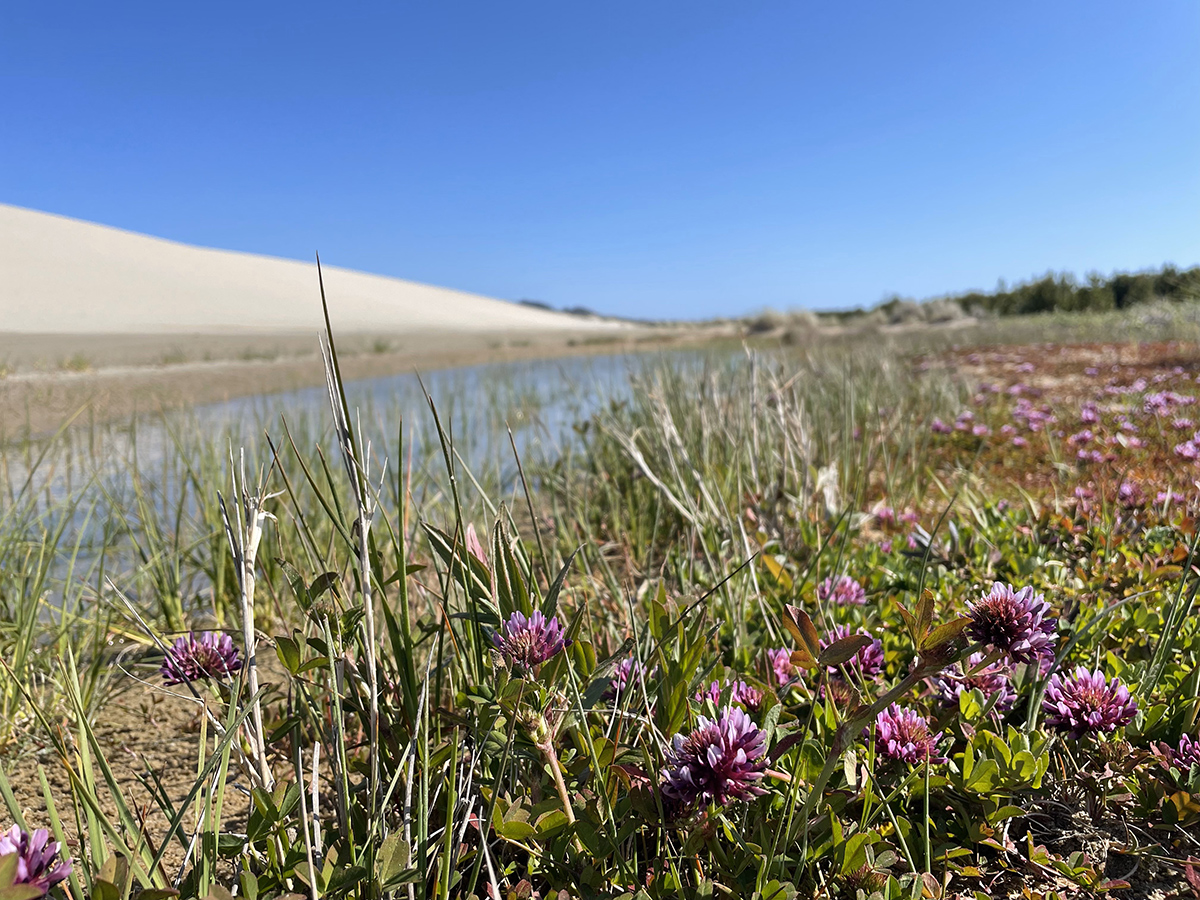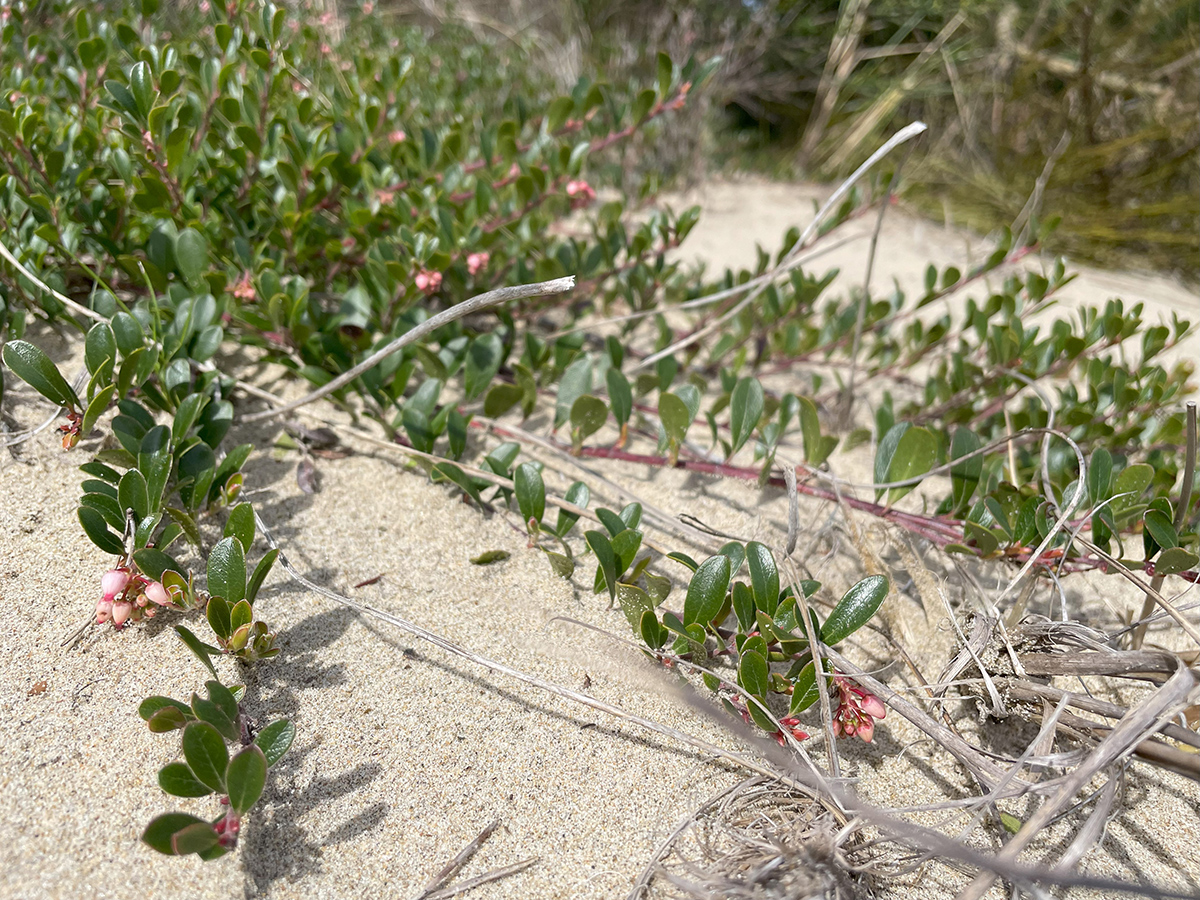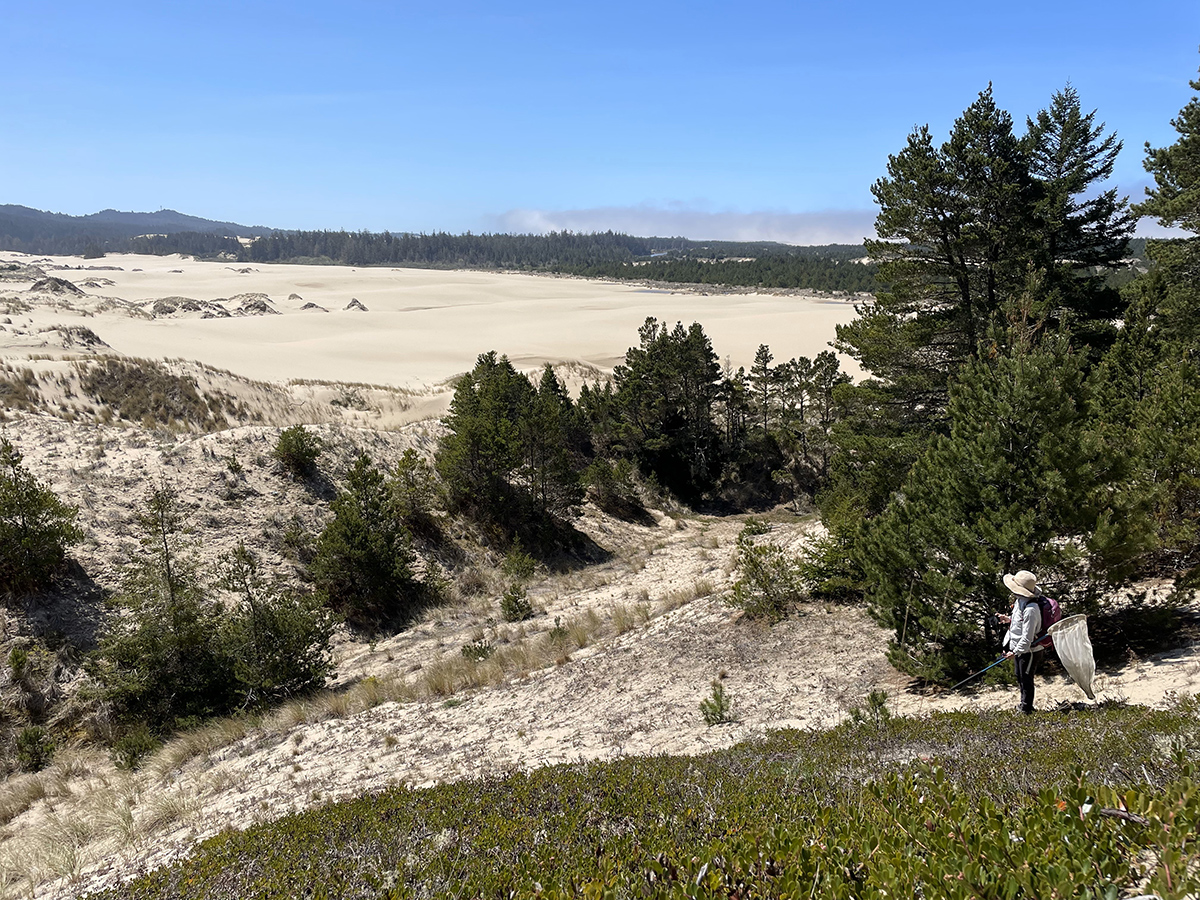When early summer sweeps across the US, plants are putting on new growth, baby animals are seemingly everywhere, and perhaps most exciting, bees, butterflies, and the many other groups of invertebrates that keep our plants reproducing and the wheels of our ecological systems turning have emerged from their overwintering states.
If you’re a Xerces endangered species conservation biologist, this means it’s time to extract insect nets from basements, dust off sun hats, and head into the natural world to seek out the rare species we study. During field season our goal is to gather information about insect populations and the habitat they rely on, in order to direct conservation resources to support their persistence.
This spring, I set out in search of two rare butterfly species along with conservation biologists Michele Blackburn and Candace Fallon – the seaside hoary elfin (Callophrys polios maritima) and coastal greenish blue (Plebejus saepiolus littoralis). These species are known from only a handful of locations along the Oregon and northern California coasts. With wingspans of 1 ¼ inches or less and fewer than 30 records of each butterfly species spanning over 88 years and 300 miles, these butterflies are hard to find.

We began our search with some careful planning. By looking at locations where a species has been found in the past, we can assess whether there are similarities between sites. We can look at satellite images and compare areas, but that doesn’t capture a whole range of characteristics that may drive species distribution like annual temperature and precipitation. Fortunately, there are computer programs able to provide much more in-depth analyses than the human eye. Using one of these analytical tools, we built models that take into account historical records of a species as well as a range of environmental factors, outputting a map of the likelihood we’ll find each species or its larval host plant in any given location. Based on this information, we selected a range of sites to survey, pinpointing what additional data we can collect to improve the models for next season.

Over the course of three weeks, tracking the flight period of the two butterfly species, we traveled the coastline from Crescent City, California north to Newport, Oregon looking for these tiny, rare butterflies and their host plants. While some sites were easily accessed by a short walk from the car, most involved long hikes, substantial bushwhacking, and marshy wading.

Since one of the major funders of the projects is the US Forest Service, the majority of our surveys focused on the Oregon Dunes National Recreation Area within the Siuslaw National Forest. This area is one of the largest expanses of temperate coastal sand dunes in the world. We surveyed remote areas within the dunes where few, if any, surveys had been completed in the past, exploring islands of forest amidst vast expanses of open dunes and driving rented OHVs (off highway vehicles) to access sites within areas set aside for OHV recreation.

After three weeks in the field we returned to the office with information on over 50 sites, records of over 80 host plant locations, and – drum roll, please – the discovery of a previously undocumented population of the coastal greenish blue butterfly! With this new information in hand, we’re prepared to refine our models and plan a second year of surveys.

The discovery of a new butterfly population was incredibly exciting, suggesting that either the species persists in an area where it had not been previously detected or has spread from a nearby population. On the other hand, our findings shed light on the fact that these species are incredibly rare. Their declining populations result primarily from human activities: introduced invasive plants outcompeting the butterfly’s host plants, reduced suitable habitat resulting from development, sensitive ecosystems degraded by recreational vehicle use, and climate change shifting the delicate balance in which these species exist.
Being immersed in this work reminds me of the joy associated with catching glimpses of our planet’s rare creatures. I invite you to go outside and experience the joy of discovery as a community scientist. And when we return to the gray, frosty days of winter after the buzz and flap of insects have quieted, I hope you’ll remember the magic of those experiences and join in the effort to protect the ecological communities around us.




